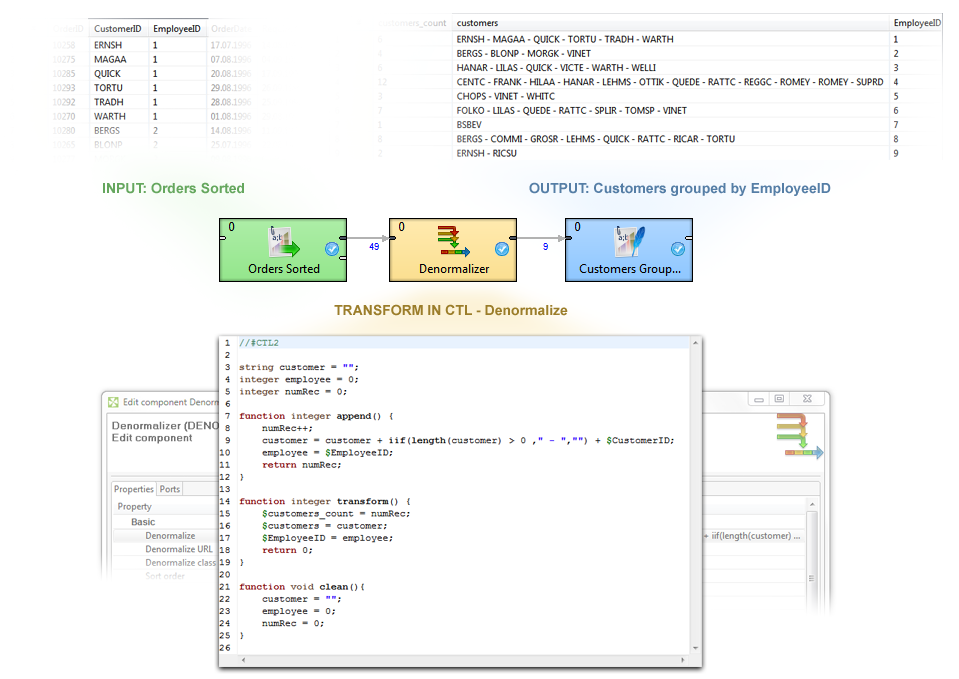Chapter 58. Overview
CTL is a proprietary scripting language oriented on data processing in transformation components of CloudConnect.
It is designed to allow simple and clear notation of how data is processed and yet provide suficient means for its manipulation.

Language syntax resembles Java with some constructs common in scripting languages. Although scripting language itself, CTL code organization into function resembles structure of Java classes with clearly defined methods designating code entry points.
CTL is a high level language in both abstraction of processed data as well as its execution environment. The language shields programmer from the complexity of overall data transformation, while refocusing him to develop a single transformation step as a set of operations applicable onto all processed data records.
Closely integrated with CloudConnect environment the language also benefits the programmer with uniform access to elements of data transformation located outside the executing component, operations with values of types permissible for record fields and a rich set of validation and manipulation functions.
During transformation execution each component running CTL code uses separate interpreter instance thus preventing possible collisions in heavily parallel multi-threaded execution environment of CloudConnect.
Basic Features of CTL:
Easy scripting language
CloudConnect transformation language (CTL) is very simple scripting language that can serve for writing transformations in great number of CloudConnect components.
Although Java can be used in all of these components, working with CTL is much easier.
Used in many CloudConnect components
CTL can be used in all of the components whose overview is provided in Transformations Overview , except in JMSReader, JMSWriter, JavaExecute, and MultiLevelReader.
Used even without knowledge of Java
Even without any knowledge of Java user can write the code in CTL.
Almost as fast as Java
Transformations written in CTL are almost as fast as those written in Java.
Source code of CTL2 can even be compiled into Java class.
Two Versions of CTL
Since version 3.0 of CloudConnect, user can write transformation codes in either of the two CTL versions.
In the following chapters and sections we provide a thorough description of both versions of CTL and the list of their built-in functions.
CTL1 reference and built-in functions:
CTL2 reference and built-in functions:
![[Note]](figures/note.png) | Note |
|---|---|
CTL2 version of CloudConnect transformation language is recommended. |